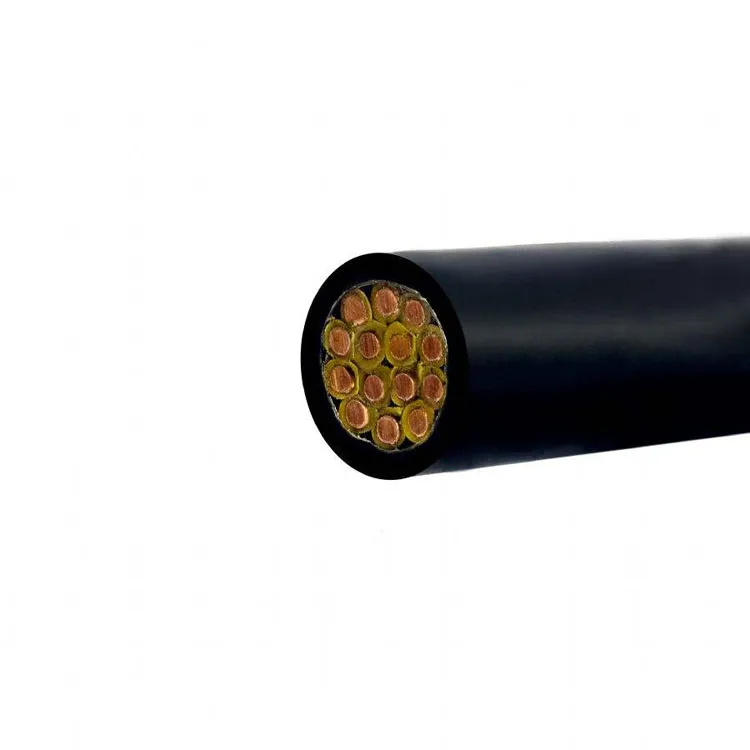Time: 2025-04-24 14:29:05 Source: Henan Province Jianyun Cable Co., Ltd.

A control wire is an electrical cable designed to transmit low-voltage signals to control devices or systems, rather than delivering power. Typically operating at voltages below 50V (e.g., 24V DC or AC), control wires carry signals to operate relays, switches, sensors, or actuators in automation systems. For example, a control wire might send a signal to turn on a motor in a factory or adjust a thermostat in a smart home.
The primary function of a control wire is to enable precise communication between a controller (e.g., a programmable logic controller, PLC) and the devices it manages. Unlike power cables like 14-2 NM-B (discussed earlier), which deliver electricity (e.g., 230V), control wires focus on data or command signals. A control wire is like a “messenger” in an electrical system—carrying instructions to make things happen without powering the devices directly.
Control wires are designed for signal integrity, flexibility, and durability. They typically consist of multiple small conductors (e.g., 0.5 mm² to 1.5 mm²), often stranded for flexibility, made of copper for good conductivity. These conductors are individually insulated with materials like PVC or polyethylene to prevent signal interference, and the entire cable is often shielded with a foil or braided layer to reduce electromagnetic interference (EMI).
Control wires may have 2 to 50+ cores, depending on the application, with each core color-coded (e.g., per IEC 60446) for easy identification. They’re often encased in a protective outer jacket (e.g., PVC, PUR) to withstand environmental factors like moisture or abrasion. For example, a 4-core control wire might have cores for signal, return, power (low voltage), and ground. The design of a control wire is like a “nerve system”—each wire is a pathway for signals, protected to ensure clear communication.
Control wires vary based on their application, shielding, and environment. Below is a table summarizing common types:
| Type | Features | Typical Use |
|---|---|---|
| Shielded Control Wire | Foil or braided shield to reduce EMI | Industrial automation (e.g., PLC to motor) |
| Unshielded Control Wire | No EMI shielding, simpler design | Residential systems (e.g., thermostat) |
| Armored Control Wire | Steel armor for mechanical protection | Harsh environments (e.g., oil rigs) |
| Flexible Control Wire | Stranded conductors, PUR jacket | Robotics, moving machinery |
Shielded Control Wires: Used in noisy environments (e.g., factories) to protect signals from EMI, as discussed in prior DC/AC cable contexts. Unshielded Control Wires: Suitable for low-interference settings like home automation. Armored Control Wires: Designed for rugged applications, with steel armor to prevent damage. Flexible Control Wires: Made with stranded conductors and durable jackets for applications involving movement, like robotics. Each type of control wire is like a “specialized tool”—chosen for the specific job it needs to do.
Control wires are used across various industries and settings for automation and signal transmission:
Control wires are like “conductors” in an orchestra—directing each instrument (device) to play its part at the right time, ensuring harmony in the system.
Control wires must comply with international and local standards to ensure safety and performance. Key standards include:
In regions like Russia (GOST R) or Saudi Arabia (SASO), control wires must also meet local fire safety standards (e.g., IEC 60332, as discussed). Compliance ensures control wires are safe, reliable, and compatible across systems. Standards are like a “rulebook” for control wires—ensuring they perform safely and consistently.
Installing control wires requires careful planning to ensure signal integrity and safety:
Proper installation is like “setting up a phone line”—you need clear pathways and protection to ensure the message (signal) gets through without interference.
Control wires encounter several challenges in their applications:
These challenges are like “obstacles” in a relay race—control wires must overcome them to deliver their signals accurately and reliably.
Control wires are adapting to advancements in automation, IoT, and renewable energy:
The evolution of control wires is like upgrading a “messenger service”—from handwritten notes to digital communication, they’re becoming faster, smarter, and more sustainable.
A control wire is a low-voltage cable (e.g., 24V) that transmits signals to control devices, used in industrial automation, building management, transportation, renewable energy, and home automation. It’s designed with multiple cores, shielding, and durable insulation (e.g., PVC, PUR) for signal integrity and flexibility. Types include shielded, unshielded, armored, and flexible wires, governed by standards like IEC 60227 and IEC 60332. Installation requires EMI protection, environmental considerations, and proper labeling, while challenges include interference, signal loss, and wear. Control wires are evolving with smart technology, faster data rates, and sustainable materials, ensuring they remain vital in modern electrical systems.